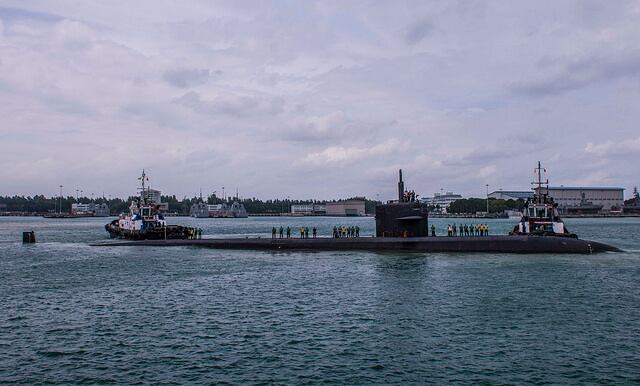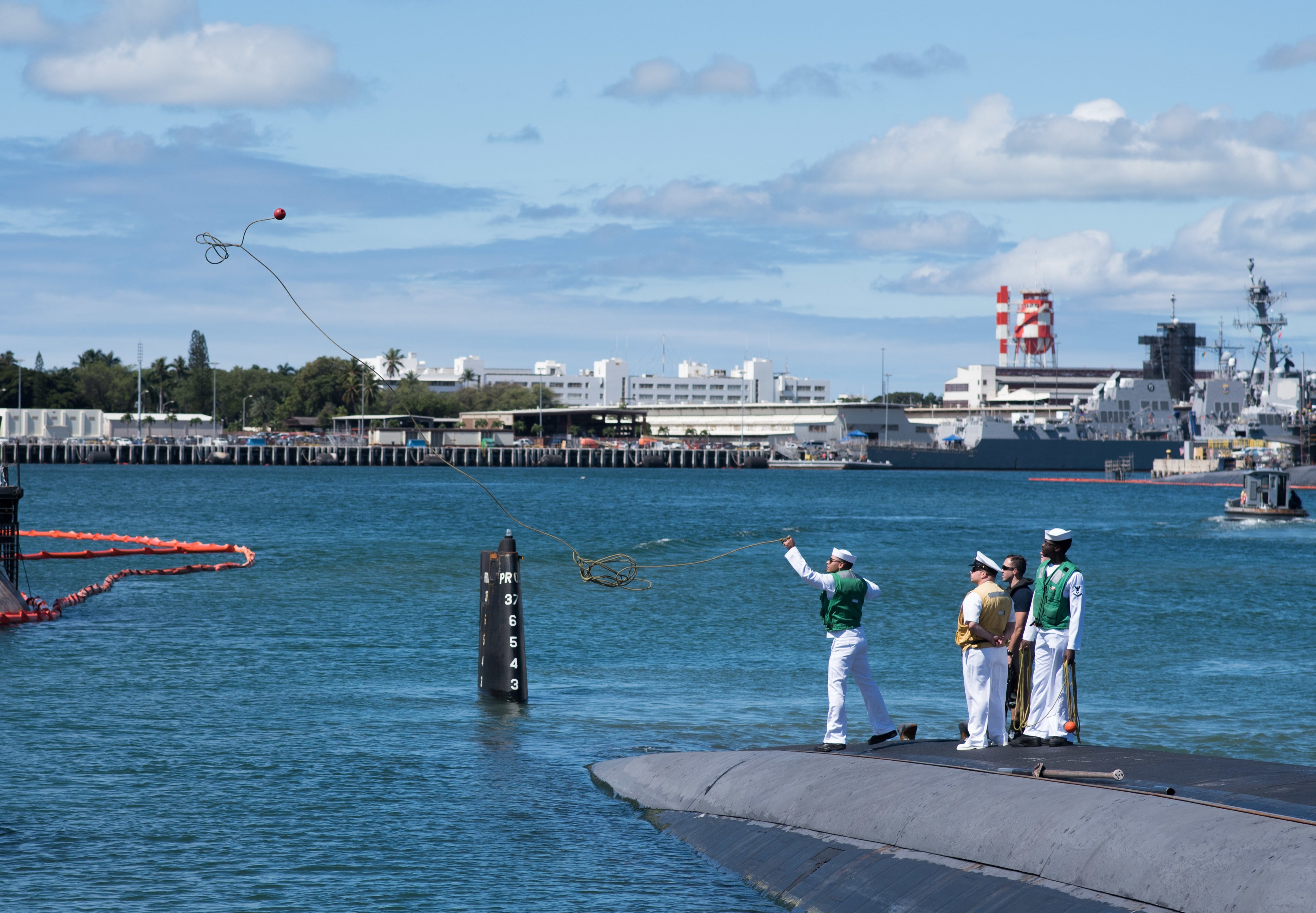PUGET SOUND NAVAL SHIPYARD, Wash. ― When the Navy commissioned the fast-attack submarine Bremerton, Blondie’s “Rapture” topped the charts and “Dallas” ruled the TV ratings.
It was March 28, 1981, and President Ronald Reagan would survive an assassination attempt a few days later.
The old boat now sits at Puget Sound Naval Shipyard, near her namesake Washington town, never to return to her Hawaiian home port.
Decommissioning and dismantlement are the final taskers for the Bremerton, the longest-serving submarine in Navy history.
It sailed more than a million miles underwater while the world above it changed, according to Cmdr. Travis Zettel, the boat’s commander.
The Bremerton sounded its first dive alert during the Cold War as the Soviet threat loomed. Later, its mission morphed to support counter-terrorism operations in the wake of 9/11.
Recent years have seen it pivot alongside the rest of the military to prepare once again for conventional war.
Over nearly four decades of service, the Bremerton conducted strike missions, chased foreign subs, interdicted narcotics shipments and performed countless other operations, Zettel said.
RELATED

As the Bremerton rests along a pier,, never to traverse the depths again, Zettel said it’s a bittersweet time.
“It’s sad to see a crew that’s ready to go out, ready to go to war, come back pier side,” he said.
With the Bremerton eventually slated to be reduced to so much scrap, some crew members were wistful about their mighty boat’s ignominious end.
“After going on deployment … you become brothers,” said Chief Information Systems Technician-Submarine Xavier Martinez. “Seeing our home being taken apart slowly is kind of emotional.”
Fire Control Technician (Submarine) 2nd Class Mason Davis said operating the Navy’s oldest sub gave Bremerton’s submariners a unique place in the community, especially compared to his buddies stationed on newer boats.
“Knowing I’m on the oldest boat and we still keep this thing going after 37 years is a point of pride for me,” Davis said. “I get to brag a little bit about that.”
Zettel said an effort is underway to get the boat’s sail turned into some sort of local monument.
“There’s a number of people pining after bits and pieces, to keep the Bremerton alive,” he said.
A Navy Times tour of the boat found knobs and other innocuous pieces have gone missing as crew members smuggle away mementos from their historic vessel.
Perhaps the oldest part on the Bremerton came from another boat.
“Annie,” a klaxon that was carried on a World War II-era diesel sub, was used before modern diving alarms arrived.
Sailors found it in the shipyard while the Bremerton was being built, and it was incorporated into the boat, Zettel said.

At one time, crews only engaged Annie when no outsiders were around.
But over the years, its distinctive “AWOOGA!” has been blasted long, loud and proud.
“Today we embrace Annie,” Zettel said. “It’s part of the ship’s history.”
As the Bremerton’s end nears, Zettel has had to pass on the famed O’Kane cribbage board, which had been part of the Bremerton’s crew since 2011.
O’Kane’s cribbage board is iconic among Submarine Force Pacific.
It once belonged to Rear Adm. Richard O’Kane, who commanded the World War II submarine Tang in the South Pacific.
That boat sank scores of Japanese ships and rescued downed American aviators.
It fired its final torpedo on Oct. 24 1944, a round that circled. The round back and struck the boat, killing all but nine of the sub’s 87 men, according to O’Kane’s New York Times obituary.
O’Kane and the other survivors were captured and spent the rest of the war in captivity.
He later received the Medal of Honor.
O’Kane’s cribbage board fell into the hands of SUBPAC, and it now rides with the oldest sub in the Pacific.
So with the Bremerton ending its duty, the board was passed on to the submarine Olympia, which was commissioned in 1984 and now takes the eldest crown.
While operating the Bremerton requires some extra TLC, Zettel said upkeep was easier in some ways.
For one, spare parts aren’t hard to find.
Other Los Angeles-class subs have already been decommissioned, offering the Bremerton’s crew easy access to replacement parts.
And after nearly 40 years in service, “best practices are there” for any fix-it job, Zettel said.
The crew is well-versed in repairing broken cogs, capacitors or other components, unlike their peers on more modern boats, where sailors “just rip out an entire drawer,” he said.
It’s not easy to end the life of a nuclear-powered submarine, and Zettel suspects the Bremerton won’t be officially decommissioned for several years.
Workers will need to shut down the reactor and defuel the boat, according to Puget Sound Naval Shipyard spokesman J.C. Mathews.
Then they’ll have to remove all classified material, cryptographic gear and refrigerants. They’ll drain the hydraulic system and clean out other fluids. The electrical works will go dark.
The reactor compartment will be pulled from the boat, then packaged for shipment and disposal, Mathews said. All the hazardous materials will go, too.
In the end, everything that made the Bremerton so mighty will be stripped away.
Scrap metal will be sold to recycling companies, and the submarine will be no more, left to live on in the memories of generations of sailors who served on her.
“Everybody understands the gravity of how long this boat’s been commissioned,” Davis said. “I think everybody gets it.”
Geoff is the managing editor of Military Times, but he still loves writing stories. He covered Iraq and Afghanistan extensively and was a reporter at the Chicago Tribune. He welcomes any and all kinds of tips at geoffz@militarytimes.com.



